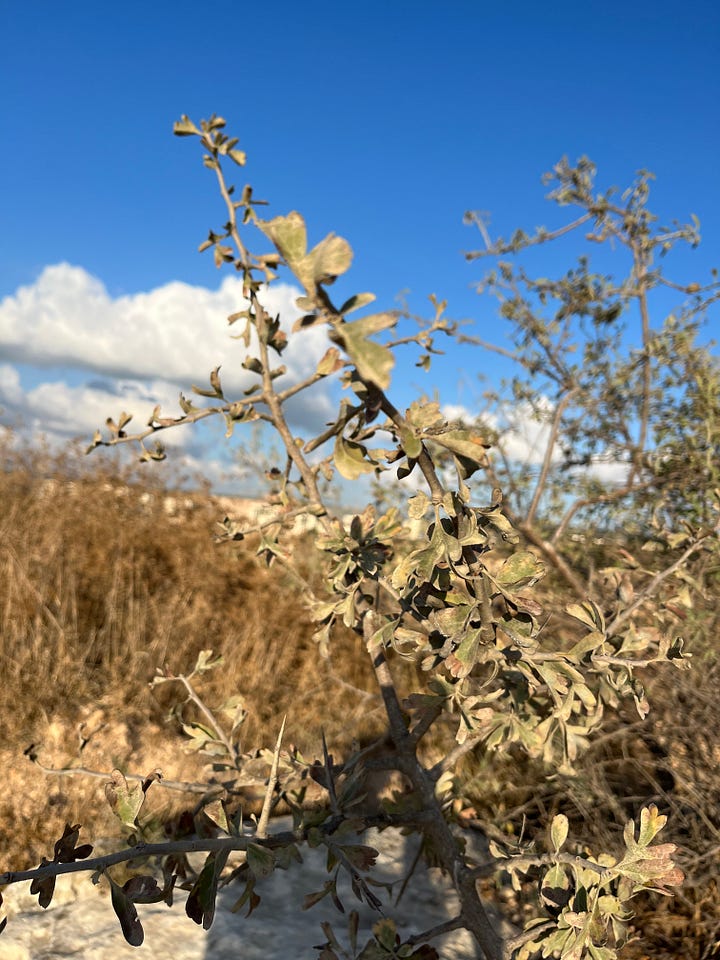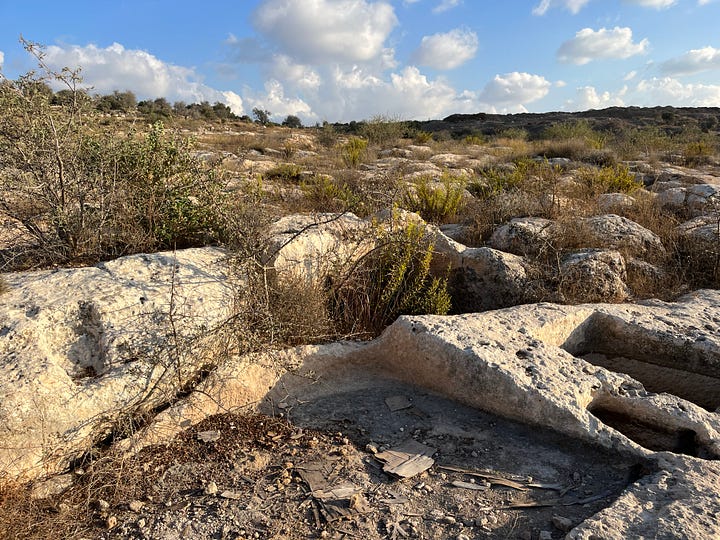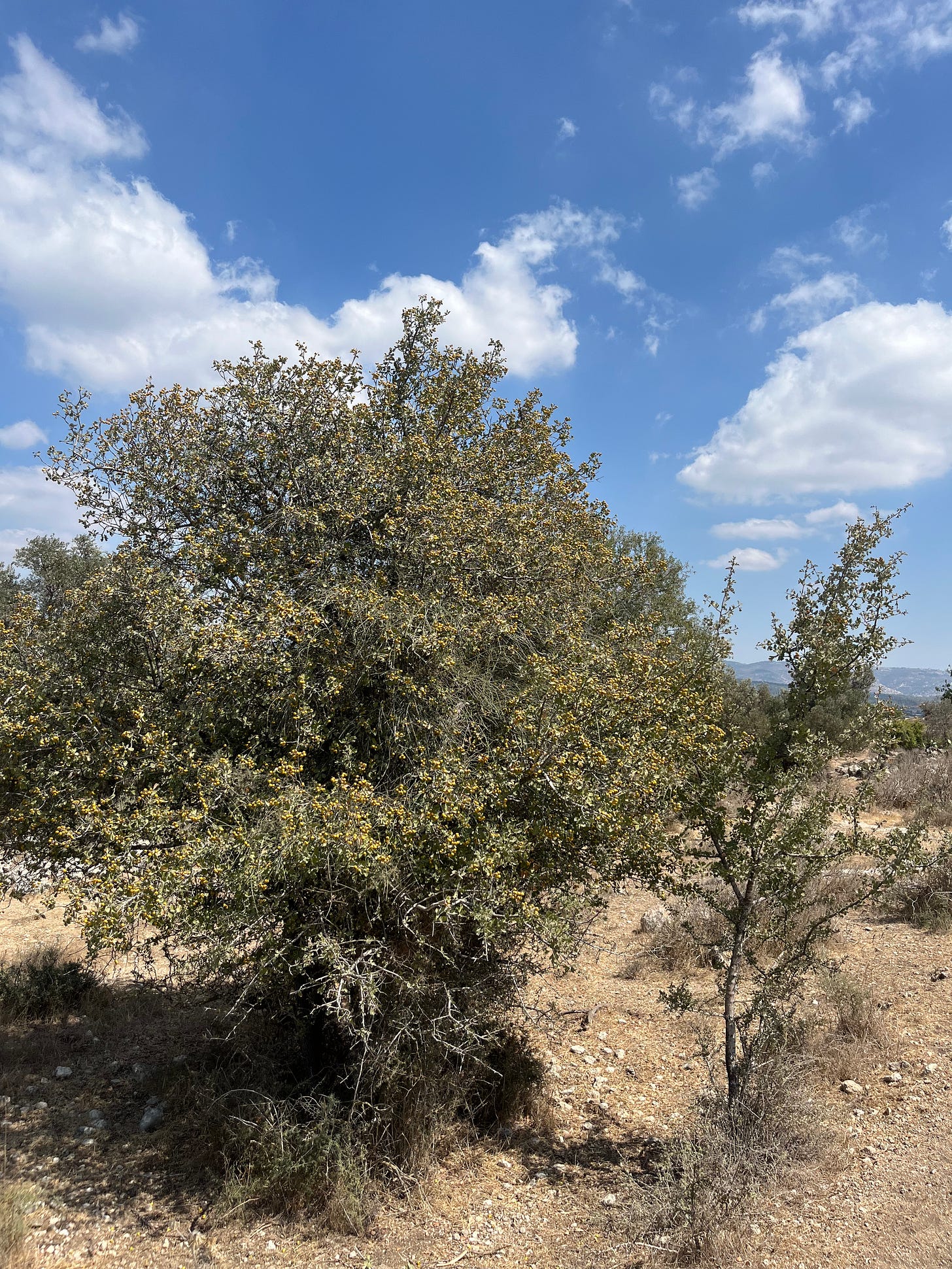Hawthorn Harvest
The Land of Israel presents a special berry: delicious, nutritious, and with a story stretching back thousands of years.
Dear Healthy Jew,
Last week I told you about buckthorn, on of the Land of Israel most common wild plants. Although foragers know buckthorn is great to eat in small quantities, you might still be nervous to try it.
A simpler place to begin foraging now is with hawthorn (Crataegus). This bush and its berries, called in Hebrew ozrar, has been growing in Israel for thousands of years, and are still commonly eaten in many countries today.
Hawthorn is probably the ozradin that’s mentioned many times in the Mishnah (for example Ma’asros 3:1). Some researchers suggest it’s the the tapuach that’s mentioned referred to by Shlomo Hamelech (King Solomon) in Shir Hashirim (Song of Songs): although today tapuach means apple, apples grew only in southeastern Asia until the Hellenist period.
Hawthorn is easily identified by its distinctive leaves: each leaf has three fingers, and each finger has another three fingers.
The hawthorn’s spring blossoms are a delicacy and medicinal herb in their own right; we’ll talk about them in their time. But now the fruits are ripe: small red or yellow berries that look and taste like tiny apples.
Eat as many as you want; they are loaded with vitamins, minerals, and all sorts of juicy nutrients. If you have high blood pressure or another cardiovascular condition, they might be particularly helpful: hawthorn extract is a classic, well-researched herbal remedy for these problems.
Hawthorn is also common all over Israel, although not as much as buckthorn. In the regions of Jerusalem and Judea, you’ll find mostly the yellow variety; the red grows in the higher climates of the Galil and Golan.
I’ve found lots of yellow hawthorns along the trails of the Jerusalem hills near Bet Shemesh. They can also be found closer to the city.
There’s one not-so-happy-looking hawthorn right in the beginning of the trail that heads up the hill where I guide lots of foraging walks. That bush grows right next to an ancient winepress; there’s a good chance the folks who worked here millennia ago munched on its grandfather’s berries while they stomped.


If you live in Ramat Bet Shemesh, I’ve got really great news: the city planted lots of red hawthorns in Yarmut Park and along the driveway heading down to it. (I’ve also found some yellow ones in the hill above the park; they probably have always been there.)
Special update from October 2024:
The red hawthorn trees above were planted by the Bet Shemesh municipality inside a local park. But it’s much harder to find good hawthorns in the countryside - by the time they turn ripe, they’re usually teeming with maggots or dried out.
But just the other day, on a run over my favorite local foraging hill, jumping around the ancient and not-so-ancient ruins of Bait Natif, I happened upon this huge tree filled with delicious, mostly worm-free yellow hawthorns.
On this Sukkos holiday’s foraging walks, we’re making sure to visit this tree, allowing it to share its gifts with all of our foragers.
Of course, never forage without guidance from a qualified professional. All information here is for educational purposes only!
Thank you for reading Healthy Jew.
Here are 2 great paths to continue the journey:
Also check out this intro and index to explore hundreds of posts about our 3 Healthy Jew topics: Wellness with Wisdom, Land of Life (Israel), and Sensible Spirituality.
Finally, always feel free to reach out here with any comments, questions, or complaints:
I look forward to hearing from you!
Be well,
Rabbi Shmuel Chaim Naiman











